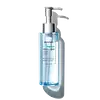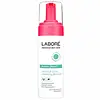What's inside
What's inside
 Key Ingredients
Key Ingredients

 Benefits
Benefits

 Concerns
Concerns

 Ingredients Side-by-side
Ingredients Side-by-side

Water
Skin ConditioningPotassium Cocoyl Glycinate
Panthenol
Skin ConditioningPotassium Cocoate
EmulsifyingAcrylates/Steareth-20 Methacrylate Crosspolymer
Sodium Lauroamphoacetate
CleansingCentella Asiatica Extract
CleansingGlycerin
HumectantDecyl Glucoside
CleansingCeramide NP
Skin ConditioningCeramide Ns
Skin ConditioningCeramide As
Skin ConditioningCeramide EOP
Skin ConditioningCeramide AP
Skin ConditioningSodium Polyaspartate
HumectantButylene Glycol
HumectantPentylene Glycol
Skin ConditioningPropanediol
SolventMethyl Diisopropyl Propionamide
MaskingEthyl Menthane Carboxamide
TonicMenthyl Lactate
MaskingHydroxypropylcellulose
EmulsifyingIsopropyl Palmitate
EmollientTrehalose
HumectantSerine
MaskingAlgin
MaskingCaprylyl Glycol
EmollientSodium Hyaluronate
HumectantPullulan
Disodium Phosphate
BufferingPotassium Phosphate
BufferingHydrogenated Lecithin
EmulsifyingPolyglyceryl-10 Stearate
Skin ConditioningEthylhexylglycerin
Skin ConditioningWater, Potassium Cocoyl Glycinate, Panthenol, Potassium Cocoate, Acrylates/Steareth-20 Methacrylate Crosspolymer, Sodium Lauroamphoacetate, Centella Asiatica Extract, Glycerin, Decyl Glucoside, Ceramide NP, Ceramide Ns, Ceramide As, Ceramide EOP, Ceramide AP, Sodium Polyaspartate, Butylene Glycol, Pentylene Glycol, Propanediol, Methyl Diisopropyl Propionamide, Ethyl Menthane Carboxamide, Menthyl Lactate, Hydroxypropylcellulose, Isopropyl Palmitate, Trehalose, Serine, Algin, Caprylyl Glycol, Sodium Hyaluronate, Pullulan, Disodium Phosphate, Potassium Phosphate, Hydrogenated Lecithin, Polyglyceryl-10 Stearate, Ethylhexylglycerin
Water
Skin ConditioningGlycerin
HumectantDisodium Cocoyl Glutamate
CleansingCocamidopropyl Betaine
CleansingNiacinamide
SmoothingPolyvinyl Alcohol
Sodium PCA
HumectantTrehalose
HumectantCitric Acid
BufferingSalicylic Acid
MaskingSodium Benzoate
MaskingSodium Chloride
MaskingZinc PCA
HumectantAllantoin
Skin ConditioningDisodium EDTA
Maltodextrin
AbsorbentButylene Glycol
HumectantPEG-8
HumectantPropanediol
SolventLactobacillus Ferment
Skin ConditioningIsostearamidopropyl Ethyldimonium Ethosulfate
Sodium Hydroxide
BufferingMirabilis Jalapa Extract
Skin ConditioningPropylene Glycol
HumectantCarthamus Tinctorius Seed Oil
MaskingOlea Europaea Fruit Oil
MaskingWater, Glycerin, Disodium Cocoyl Glutamate, Cocamidopropyl Betaine, Niacinamide, Polyvinyl Alcohol, Sodium PCA, Trehalose, Citric Acid, Salicylic Acid, Sodium Benzoate, Sodium Chloride, Zinc PCA, Allantoin, Disodium EDTA, Maltodextrin, Butylene Glycol, PEG-8, Propanediol, Lactobacillus Ferment, Isostearamidopropyl Ethyldimonium Ethosulfate, Sodium Hydroxide, Mirabilis Jalapa Extract, Propylene Glycol, Carthamus Tinctorius Seed Oil, Olea Europaea Fruit Oil
 Reviews
Reviews

Ingredients Explained
These ingredients are found in both products.
Ingredients higher up in an ingredient list are typically present in a larger amount.
Butylene Glycol (or BG) is used within cosmetic products for a few different reasons:
Overall, Butylene Glycol is a safe and well-rounded ingredient that works well with other ingredients.
Though this ingredient works well with most skin types, some people with sensitive skin may experience a reaction such as allergic rashes, closed comedones, or itchiness.
Learn more about Butylene GlycolGlycerin is already naturally found in your skin. It helps moisturize and protect your skin.
A study from 2016 found glycerin to be more effective as a humectant than AHAs and hyaluronic acid.
As a humectant, it helps the skin stay hydrated by pulling moisture to your skin. The low molecular weight of glycerin allows it to pull moisture into the deeper layers of your skin.
Hydrated skin improves your skin barrier; Your skin barrier helps protect against irritants and bacteria.
Glycerin has also been found to have antimicrobial and antiviral properties. Due to these properties, glycerin is often used in wound and burn treatments.
In cosmetics, glycerin is usually derived from plants such as soybean or palm. However, it can also be sourced from animals, such as tallow or animal fat.
This ingredient is organic, colorless, odorless, and non-toxic.
Glycerin is the name for this ingredient in American English. British English uses Glycerol/Glycerine.
Learn more about GlycerinPropanediol is an all-star ingredient. It softens, hydrates, and smooths the skin.
It’s often used to:
Propanediol is not likely to cause sensitivity and considered safe to use. It is derived from corn or petroleum with a clear color and no scent.
Learn more about PropanediolTrehalose is a disaccharide made of two glucose molecules (glucose is sugar!). Trehalose is used to help moisturize skin. It also has antioxidant properties.
As a humectant, trehalose helps draw moisture from the air to your skin. This helps keep your skin hydrated.
Due to its antioxidant properties, trehalose may help with signs of aging. Antioxidants help fight free-radical molecules, unstable molecules that may damage your skin.
In medicine, trehalose and hyaluronic acid are used to help treat dry eyes.
Some animals, plants, and bacteria create trehalose as a source of energy to survive freeze or lack of water.
Learn more about TrehaloseWater. It's the most common cosmetic ingredient of all. You'll usually see it at the top of ingredient lists, meaning that it makes up the largest part of the product.
So why is it so popular? Water most often acts as a solvent - this means that it helps dissolve other ingredients into the formulation.
You'll also recognize water as that liquid we all need to stay alive. If you see this, drink a glass of water. Stay hydrated!
Learn more about Water